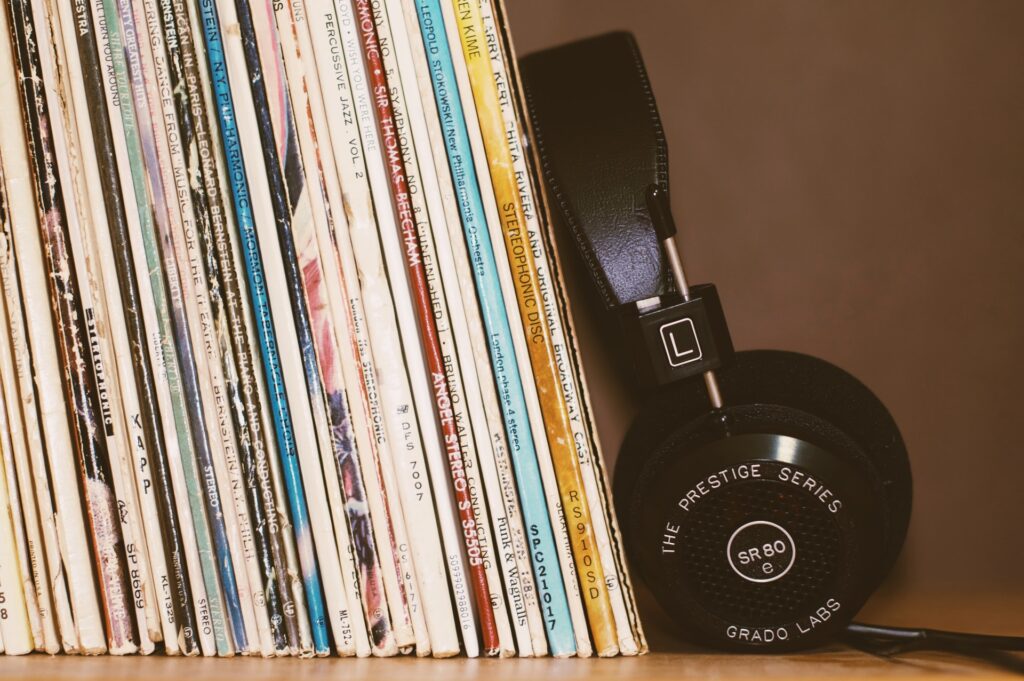
Engagement is one of the most important metrics in the event industry. It tells you how well your event went—and what to do different at the next one. There are dozens of ways to boost engagement at both in-person and virtual events. But when you’re going down your checklist of interactive games and a published schedule, don’t forget to add music to your event.
Music can make us feel a lot of emotions: It can ease uncomfortable silences and it can excite a crowd. That’s why it’s so important to add music to your event. You can set the mood for your event, whether it’s a formal affair or a casual hang. The music doesn’t have to be the songs that are playing on the radio right now, either. In fact, you might not be able to play those songs. (Keeping reading to learn about music copyrights at events.) Instead, your music can be lyric-less, it can include sound effects, and it can be just quiet enough that no one can explicitly make out what song it is. But it’s playing! Keep reading to discover four simple ways to add music to your event.
A note about music copyrights

Before you finalize any playlist for your event, be sure to research the copyright laws for your music choices. In general, private events don’t require the purchase of a music license. Private events typically include events for friends and family—like a birthday party or baby shower. But for public events, you’ll need to obtain permission to play certain songs.
If you don’t have the correct permissions, you could face significant fines. In extreme cases, it could land you in jail—but that most likely won’t be the case if you use one pop song at a networking event. However, you should still make sure you have the proper licenses to play your songs, and always speak with an attorney for legal advice.
If you’re worried about copyrights for your public event, or you don’t want to worry about them, you can always use a royalty-free website like PremiumBeat or Artlist. They might still cost something, but it won’t be as much as a fine!
1. Add Music During Networking
At some events, the attendees do all of the talking—to each other. Of course, playing loud music during this time would be counterproductive. But playing soft background music can provide a little cover so not everyone hears your conversation. Plus, the right music can energize your crowd or make them feel calm. All of that can encourage conversation during networking.
You can also use music as part of your networking event, too. For example, you can let attendees know that every time the song changes, they have to find a new chatting buddy or switch tables. Similarly, you can host small networking breakouts throughout your event. And when the music ends, attendees will know it’s time to reconvene at their main table or room.
2. Add Music to the Presentation

Presentations help your audience stay engaged and informed during a speech, lecture, or training. Adding music and sound effects to your presentation can enhance these benefits. No, you don’t want to play loud music on every slide. But you can add a sound effect when each slide changes or when new elements are added to a slide.
You can also add sound effects, like a drum roll, before you share an important announcement. Or include digital confetti and a kazoo sound when audience members get an answer correct.
3. Add Music to Introductions
If you’re introducing a keynote speaker or a panel of experts, you’re going to introduce each person, one at at a time. You’ll say their name, their title, and probably read a few sentences about who they are or what they do. On its own, that can be a little monotonous. To help get your audience in the proper mood for the discussion that’s about to take place, consider playing a little music for each introduction, as the speaker walks on stage and the audience claps.
If you have a lot of introductions, let each person choose their own song—like boxers do when they enter the fighting ring. It’s a great way to get to know the person on stage while getting the audience engaged. Just remember to double check your licensing for the songs that you choose!
4. Add Music in Waiting Areas and Bathrooms

Are there spots at your event where attendees might not be talking on purpose? For example, most people don’t talk while they’re in the bathroom or while they’re waiting in line for an event to begin. These are perfect spots to add some ambiance!
For starters, it makes the silence less noticeable. And awkward silences when everyone is standing around can be uncomfortable. Even if people are chatting quietly in line, there aren’t multiple conversations happening at full volume. And in places like bathrooms, it can add to the feeling of privacy because it’s harder to hear hushed conversations or, well, going to the bathroom.
Conclusion
Music is used in movies and TV shows to engage viewers and tell them what to think and feel. For example, the music during a scary scene makes it feel even spookier! Or it can make you excited during an intense action scene. It can even make you cry during a breakup. And while you probably don’t want your attendees to be crying, you can still add music to your event to set the mood and get them excited.
Was there music at the last event you attended? What did it make you feel?

